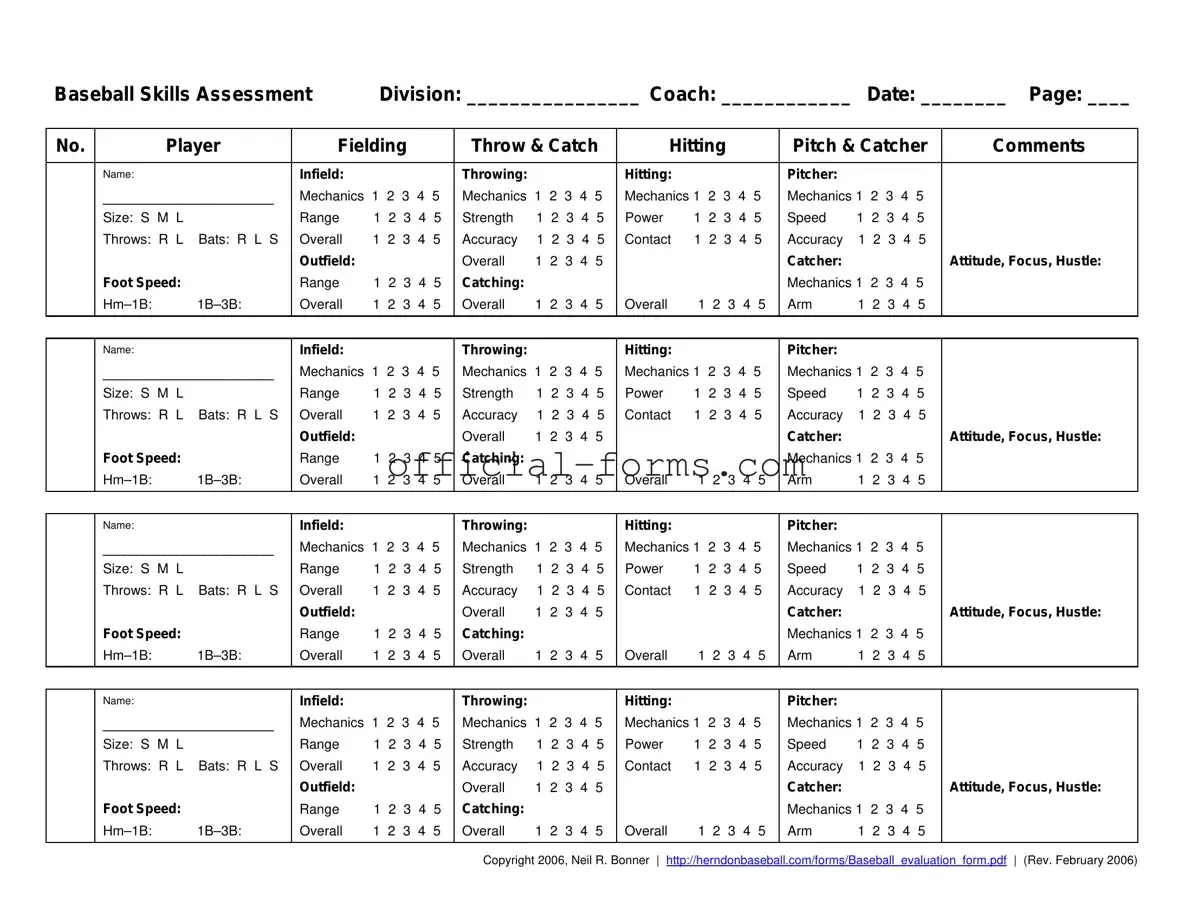Blank Baseball Assessment Form
The Baseball Skills Assessment Form is a standardized tool used to evaluate players' abilities in various baseball skills during tryouts. This form provides coaches with a structured way to score players in categories such as fielding, hitting, and pitching, ensuring a fair selection process for teams. By utilizing this assessment, coaches can make informed decisions based on objective criteria, enhancing the overall quality of the team.
Open My Baseball Assessment Now
